Discover Beijing’s Best 10 Authentic Hutongs
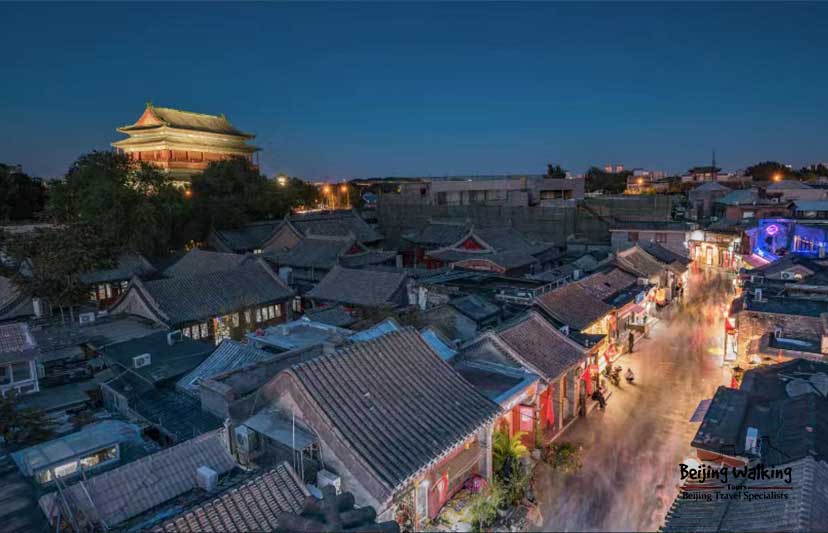
Hutong, or traditional alleyways, are integral to Beijing’s cultural heritage. These narrow lanes, lined with courtyard houses, offer a glimpse into the city’s rich history and provide a unique experience for visitors. As I embarked on my journey through the Hutong in Beijing, I was captivated by the charm and authenticity of these ancient alleyways.
The history and significance of Hutong
Hutong can be traced back to the Yuan Dynasty (1271-1368), when Beijing became the capital of China. The city’s layout was carefully planned, with the Forbidden City as its centerpiece and the Hutong radiating outwards. These alleyways were not just a means of transportation; they were a way of life for the residents of Beijing. Generations of families lived in the Hutong, creating a tight-knit community that thrived amidst the bustling city.
Exploring the unique architecture and design of Hutong
One of the most striking features of Hutong is its architecture and design. The courtyard houses, known as Siheyuan, are the main structures found in the Hutong. These houses have a central courtyard surrounded by buildings on all four sides. The layout is aesthetically pleasing and functional, providing privacy and protection from the elements.
Each Siheyuan has its unique design, reflecting the tastes and preferences of its occupants. Intricate carvings, colorful paintings, and traditional Chinese motifs adorn the doors and windows, adding a touch of elegance to the Hutong. As I wandered through the narrow alleyways, I couldn’t help but marvel at the craftsmanship and attention to detail that went into creating these architectural wonders.
Top 10 Authentic Hutongs to Visit in Bejing
1. Nanluoguxiang 南锣鼓巷
Nanluoguxiang was built in the Yuan Dynasty and received its current name during the Qing Dynasty, around 1750. Recently, the Area’s hutongs have become a popular tourist destination with restaurants, bars, live music houses, coffee shops, fast food, souvenir shops, and some old siheyuan associated with famous historical and literary figures.
Surroundings: Drum and bell tower, Shichahai Lake, Jingshan Park
Subway: Line 6 and Line 8 to Nanluoguxiang subway station
2. Wudaoying Hutong 五道营胡同
Wudaoying Hutong is a bustling and historic neighborhood in Beijing, China. Known for its traditional courtyard houses, vibrant shops, cafes, and restaurants, it offers visitors a chance to immerse themselves in the charm of traditional Chinese architecture and experience the lively atmosphere of a bustling hutong.
Surroundings: Lama temple, Confusion temple
Subway: line 2 and line 5 Yonghegong lama temple station
3. Qianmen street 前门大街
Qianmen Street is a bustling commercial street located in Beijing, China. Its rich history and vibrant atmosphere offer visitors a unique blend of traditional architecture, shops, restaurants, and cultural attractions.
Surroundings: Tiananmen Square, Beijing Railway Museum
Subway: Line 2 to Qianmen station.
4. Guozijian Hutong 国子监街
The Beijing Guozijian (Imperial College), dating to 1306, and the Temple of Confucius, built in 1302, are located on this street. The Yonghe Temple is located next to its east entrance.
Surroundings: Lama temple, confusion temple
Subway: line 2 and line 5 Yonghegong lama temple station
5. Tobacco Pouch Street 烟袋斜街
Know as Yandai Xiejie in Chinese, the Skewed Tobacco Pouch Street is one of the oldest hutongs and is a famous attraction in Beijing. It is 232 meters long, with its east end on Di’anmen Street and the west to the Silver Ingot Bridge.
Surroundings: Drum and bell tower
Subway: line 8 to Shichahai station
6. Jiuwan Hutong 九湾胡同
Juwan Hutong is located near the Zhushikou subway station. It is the Area for poor people who lived in the old days. And today it is a poorly developed place, which helps you to know more about the local life. Some of the Hutong hutongs are only 40 cm wide. The road is not enough for a bike to go through.
Surroundings: Temple of Heaven
Subway: line 7 to Zhushikou station
7. The longest: Dongjiaominxiang Hutong 东郊民巷 (1552 meters)
There are a lot of historic sites and former embassies, but as they are government offices, they are not popular with tourists. If you want to see the old embassies and the government buildings today, it is a great place to visit.
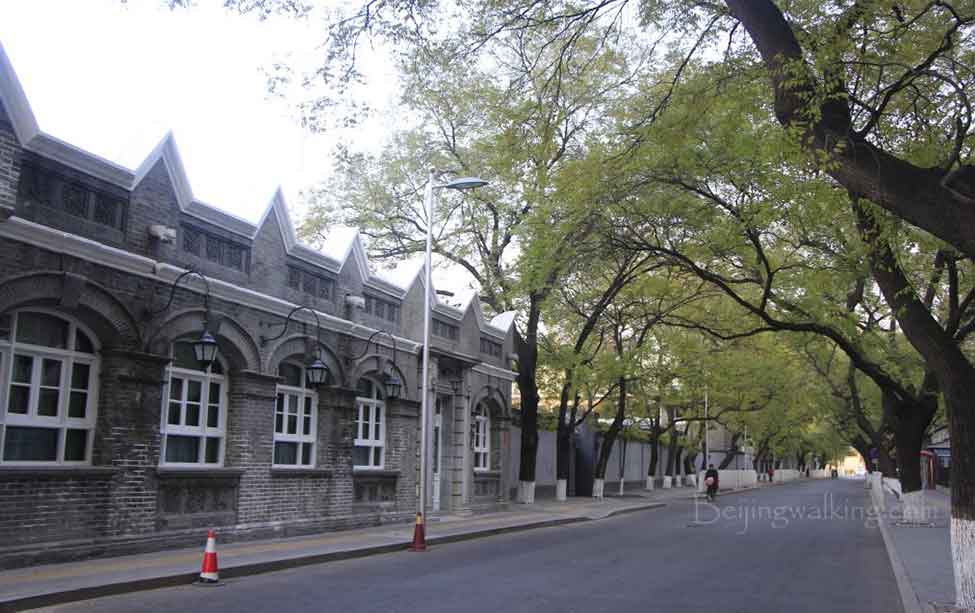
8. The shortest: Yichi Dajie 一尺大街(25 meters)
This Hutong is between Qianmen Street and Liuli Chang East Street, only 25 meters away. There are many nice hutongs around here, such as the famous Bada hutong (八大胡同). The bada hutong is an area of 8 hutongs that was full of whore houses in the old days. The buildings are charming and an excellent place to walk. There are a lot of hutongs with two floors, which tells us it was the business center of the old capital.
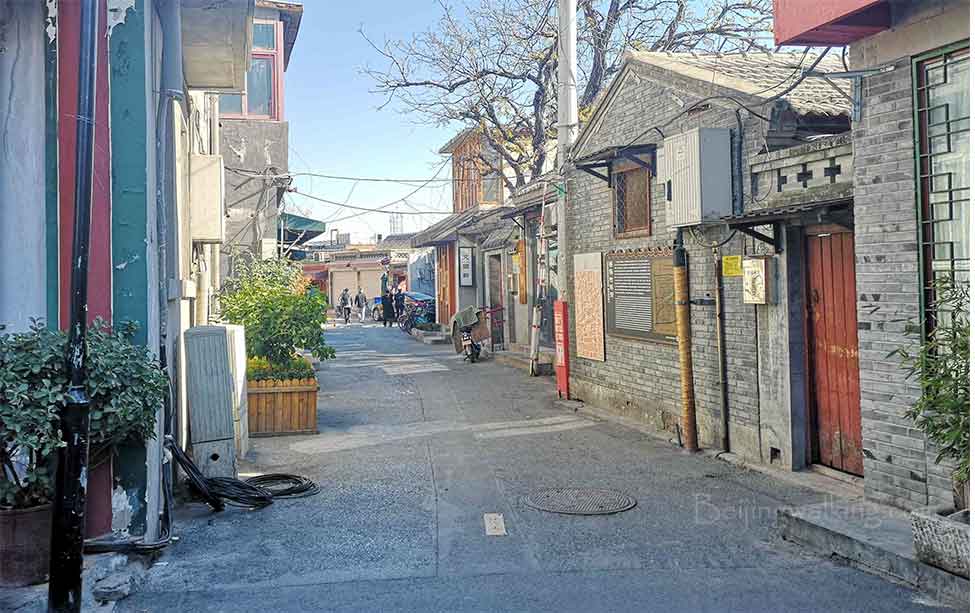
9. The oldest: Zhuanta Hutong 砖塔胡同 800 years old
Near the xisi subway station, it is the oldest Hutong. There live the locals only, with a beautiful pagoda. Inside the pagoda is a bookstore, and you can have a drink inside like it was hundreds of years ago.
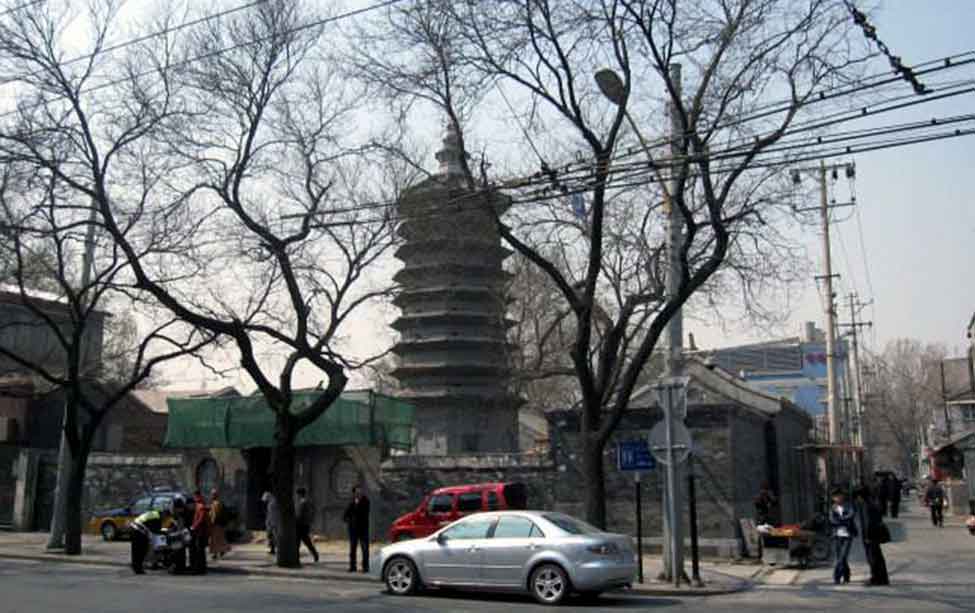
10. Liulichang Street 琉璃厂街
Beijing’s Liulichang Street, dating back to the Ming Dynasty, is a cultural hub renowned for its traditional architecture and vibrant arts scene. The street is famous for its numerous antique shops, calligraphy studios, and art stores, offering a wide array of Chinese art, crafts, and collectibles. Visitors can explore the rich cultural heritage, shop for traditional souvenirs, and immerse themselves in the atmosphere of old Beijing while strolling along this historic and picturesque street.
Recommend Hutong walking rote:
1. Shichahai area
This is the most classic route to make the hutong walk. Start from Nanluoguxiang, turn to the left to avoid the crowded tourists, and then you will walk into the Hutongs, where the locals live and work. Walking to Drum and Belltower, Houhai, you can visit Prince Kung’s Mansion. It is about 3 hours of walking; you can stop at Shichahai to eat and rest, then it will be a perfect half-day Hutong trip.
2. Qianmen Area

This Area is good to combine with Tiananmen Square and the Forbidden City.
You can start from Liiulichang Street, where you will find a lot of Chinese elements, such as paintings and calligraphers. Then, walk to Dashilan, which has been the business center for Beijing for the last 600 years; there are many traditional Chinese shops there. You can visit the Food Street at the Xianyukou Hutong. Then, it’s about a 10-minute walk to Tiananmen Square.
FAQS
What does Hutong mean?
Hutong in Chinese: 胡同.
Several theories exist about the origin of the word “胡同”(HHutong). The one I believe most is the transliteration of the word “well” in Mongolian. China used to be conquered by Kublai Khan, the grandson of Genghis Khan. When they moved to China, they chose Beijing as the capital. It may be because Beijing is near their hometown; if they didn’t rule this country well, they could run away from China. Anyway, a lot of Mongolians move to Beijing and stay here. Mongolians are Nomads who constantly move to look for food, especially fresh grass for their sheep. So water became essential to them; wherever they moved, they needed to find water and dig a water well first. After they moved to Beijing, many water wells were drilled outside their house, which became landmarks for the City. So people name the street hutong after that. But the traditional home, united with hutong street people, is called “SIHEYUAN,” which means Quadrangle dwellings.
How many hutongs exist in Beijing? Who owns the hutongs?
In 1980, there were about 4000 Hutongs left in Beijing. More and more hutongs were destroyed during the last 40 years of Chinese economic reform. Currently, approximately 1,000 hutongs remain in Beijing [2]. The ownership of hutongs is complex and can vary. In some cases, the government owns the land and houses within the hutongs, while individuals or families may own the properties in other cases. The preservation and management of hutongs are overseen by various government departments and heritage organizations to protect their cultural and historical significance [3]
What’s the difference between Hutong and Siheyuan?
Hutong refers to the narrow alleyways or streets, while Siheyuan refers to the traditional courtyard houses that line those streets in Beijing and other Chinese cities. Hutong is the public space, and Siheyuan is the private residence.
Which Hutong is the oldest in Beijing?
Zhuanta Hutong is about 800 years old.
What is the best way to explore Beijing’s hutongs?
The best way to explore Beijing’s hutongs is on foot or by bicycle. Walking allows you to immerse yourself in the narrow streets, observe the traditional courtyard houses, and discover hidden gems. Renting a bike provides a convenient and efficient way to cover more ground and explore a larger area of hutongs. You can also join a guided walking or cycling tour led by a local expert who can provide insights into the history, culture, and stories behind the hutongs, enhancing your overall experience.






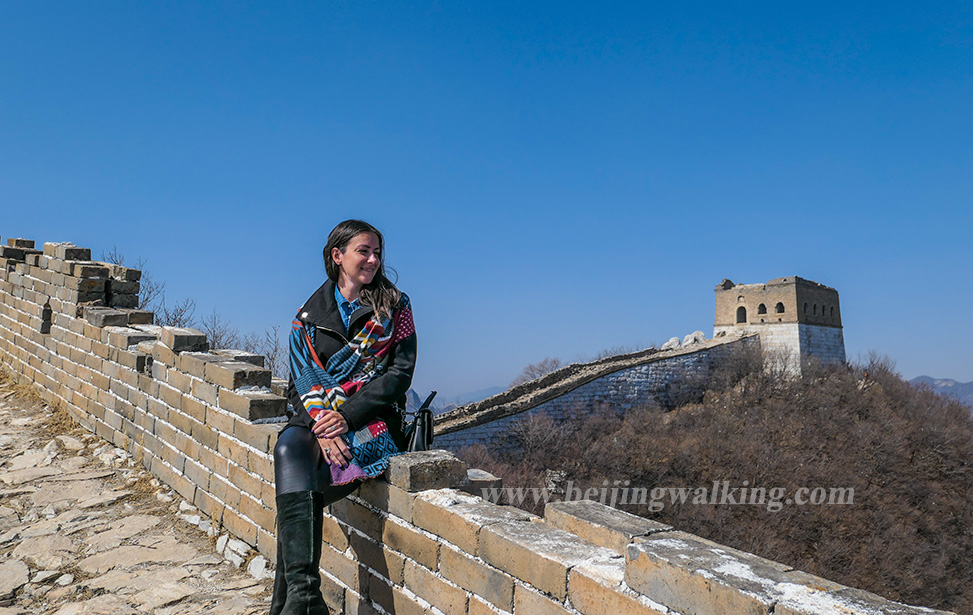
2 Comments so far
GordPosted on11:01 am - Aug 23, 2019
nice site and good tips
Leo KuiPosted on10:56 am - Dec 13, 2020
Thank you very much, wish you a good trip to Beijing.